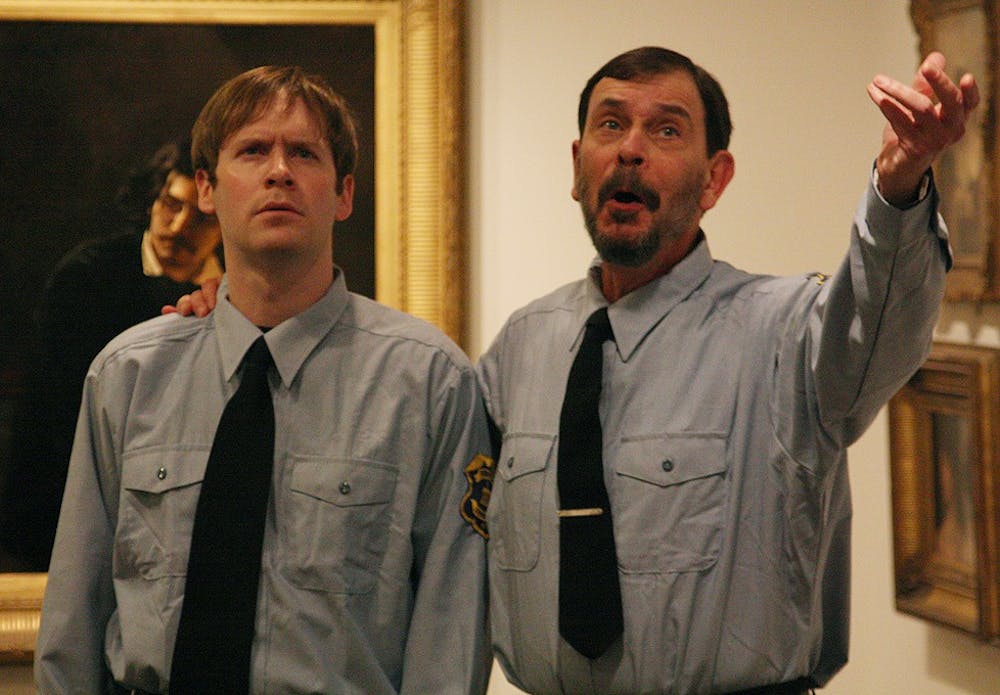The creator and producer of the festival, Coen reached out to the Ackland and fellow faculty writers in June 2011.
Coen’s play is a serious one-character drama based on a modernist painting by Milton Avery.
Coen said the playwrights faced the challenge of presenting short dynamic plays in such a limited space as the galleries.
“We’re relying on the imaginations of the writers, the directors and the audience to suspend belief and enjoy the magic of theater,” he said.
Coen is the acting director of UNC-CH’s Writing for the Screen and Stage program.
“Activated Art” is his first foray into ekphrasis, and he said he has enjoyed the process and the various outcomes of the writers’ inspirations.
Edgerton said he knew his play would be about the sculpture “Wisdom Supporting Liberty” when he saw the title, which brought political issues and images to his mind.
Edgerton teaches creative writing at UNC-W. A prose writer, he said he has written a couple of scripts before, but never thought of pairing writing with artwork.
“The idea of doing a play in an art museum seemed like mixing apples and oranges,” he said. “The history of mixing apples and oranges is replete with failure — all the more reason for me to want to get involved.”
Wallace — an author, illustrator and screenwriter — is no stranger to pairing the written and the visual, but he had never written a play. The director of the UNC-CH creative writing program was all for “Activated Art.”
“It makes sense. We all see art and create these pictures in our minds anyway. We create stories based on these images,” he said.
Wallace is the author of four novels, including “Big Fish,” which was adapted into a film in 2003.
To get the day's news and headlines in your inbox each morning, sign up for our email newsletters.
“In a novel you have a lot more leeway to meander and to dwell on moments, whereas a play always has to be moving ahead,” he said.
His play for “Activated Art” was influenced by two portraits of historical figures Henry Richard Vassall Fox, Lord Holland and Madame de Villeneuve-Flayosc. Wallace said he was drawn to the characters’ expressions.
Wallace said he did not frame his story around a historical event because he doesn’t like to do a lot of research.
“I find that the more I know, the more circumscribed my imagination is,” he said. “I try to know as little as possible, and it’s worked well for me so far.”
Gingher also found inspiration in the expressions of her painting’s characters. She based her play on “Washing,” an 1860 depiction of the everyday chore of laundry. It was the everydayness that Gingher said caught her attention.
“We’re all experts on it,” she said. “We all know what we have to do in a given day to get through it.”
Gingher said that she has enjoyed the riddle aspect of the festival.
“Activated Art” is not the published author’s first theatrical venture. She is the co-owner and collaborator of a puppet theater for adults called Jabberbox Puppet Theatre.
“We do adult puppet comedy with brief puppet nudity — that’s our slogan,” she said.
Gingher said she likes the idea of different art forms leaving their boundaries and colliding to create a hybrid.
Gingher said that she liked how each writers’ interpretation of “Activated Art” differed.
“It’s like a four-ring circus,” she said. “The plays are variously funny, serious, charming, thought-provoking. They’re like hors d’oeuvres. They’re all different, but they’re all delightful.”
Contact the Arts Editor at arts@dailytarheel.com.




